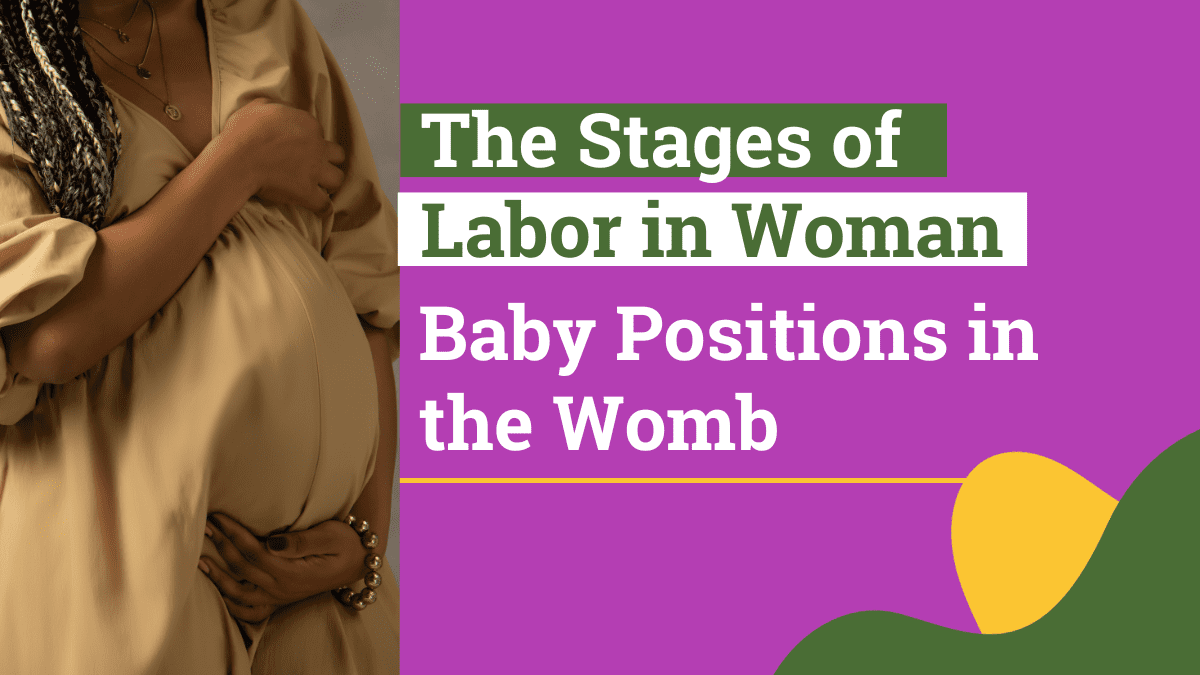Contents
Introduction

Stages of Labor : Imagine the moment when you first hold your little bundle of joy in your arms. That magical experience stems from a journey known as labor. The stages of labor, combined with the complex positioning of the baby in the womb, play crucial roles in the miraculous process of childbirth. In this article, we will delve into the intricacies of the stages of labor and explore the various positions babies can assume in the womb.
The Stages of Labor
Labor is divided into three distinct stages, each with its own remarkable developments. Let’s explore each stage in detail:
Stage 1: Early Labor

During early labor, your body begins preparing for the birth of your baby. Here’s what you can expect during this stage:
- Contractions: The onset of contractions signifies the commencement of labor. These contractions may start irregularly, occurring at varying intervals and intensities.
- Cervical Dilation: As your body gears up for childbirth, your cervix begins to open or dilate. This dilation allows the baby to pass through the birth canal. In early labor, the cervix typically dilates to around 3-4 centimeters.
- Bloody Show: You may observe a bloody discharge, known as the “bloody show.” This discharge is caused by small blood vessels breaking as the cervix dilates.
- Other Signs: Some women may experience a release of the amniotic fluid, commonly referred to as the water breaking. Furthermore, you may notice heightened emotions, back pain, or a nesting instinct during early labor.
Callout: Remember to maintain a calm and relaxed environment during the early labor stage. Use breathing techniques, relaxation exercises, and support from your loved ones to stay composed.
Stage 2: Active Labor

As early labor transitions into active labor, the intensity and frequency of contractions increase. Here’s what to anticipate in this stage:
- Increased Contractions: Contractions become more regular, lasting longer and occurring more frequently. This progressive pattern helps facilitate the birth process.
- Full Cervical Dilation: The cervix continues to dilate until it reaches the full dilation of 10 centimeters. This milestone indicates that your baby is ready to make their grand entrance into the world.
- Pushing: With complete cervical dilation, the stage is set for you to actively participate by pushing. This stage requires immense physical effort, as you work in harmony with your body to help guide your baby through the birth canal.
- Fetal Descent: During active labor, the baby descends further into the birth canal, guided by the force of your contractions. This remarkable journey brings the baby closer to their birth.
The Purpose of Meiosis: Ensuring Genetic Variation and How to Prevent Birth Defects
White Lung Pneumonia Outbreak in Ohio: 10 Shocking Facts
Baby Positions in the Womb
During pregnancy, your baby’s position within the womb can vary, showcasing their ability to adapt and maneuver. Here are some common positions:

Head Down (Vertex Position)
The head-down or vertex position is the most common and desirable position for birth. In this position, the baby’s head is positioned closest to the birth canal, making the delivery process smoother.
Breech Position
In the breech position, the baby’s buttocks or feet are positioned closest to the birth canal instead of the head. This position occurs in roughly 3-4% of full-term pregnancies and may require additional medical interventions, such as a cesarean section.
Transverse Position
In the transverse position, the baby’s body is positioned horizontally within the womb, with their head on one side and their feet on the other. This position can impede a natural delivery and usually necessitates a cesarean section intervention.
Occiput Posterior Position
The occiput posterior position, also known as the “sunny-side-up” position, occurs when the baby is facing the mother’s abdomen, with their back, instead of their face, positioned towards the mother’s spine. This position may cause intense back pain during labor and can prolong the delivery process.
Callout: It’s important to remember that babies often change positions throughout pregnancy. Your healthcare provider will monitor your baby’s position as your due date approaches and guide you accordingly.
Conclusion
The stages of labor and the positions babies assume in the womb are truly awe-inspiring. From the early signs of labor to the intense pushing stage, every moment is part of a beautiful journey. Understanding the stages and positions can help you prepare mentally and physically for the incredible gift of childbirth. Embrace the rhythm of labor and trust in the wisdom of your body as you welcome your little one into the world.
Callout: Remember, every labor journey is unique. Consult with your healthcare provider to address any specific concerns or questions you may have.
External Links:
- American Pregnancy Association: Understanding Labor
- Mayo Clinic: Baby Positions Before Birth

